
In this indepth review, we look at several top-of-the-range headtorches, some lightweight models, and some budget options. If you are looking for a new 'hands free lighting system' (does anyone outside of marketing actually say that!?) then this review could help you make a choice.
From the ultra-bright Mammut X-Sun at £250 to the great value Alpkit Manta at £15, we look at a full range of headtorches. We test them at the crag, in the mountains, on the trails and even on the ski slopes. Which did we like the best? Read on to find out, but first some history and technology lessons...
Things have moved on a long way since the original Petzl Zoom headtorches which hit the shelves back in 1981. First came much lighter and longer-lasting LED headtorches, and now we have super bright, rechargable and even 'reactive light' torches. But what does it all mean, and what kind of headtorch should you buy?
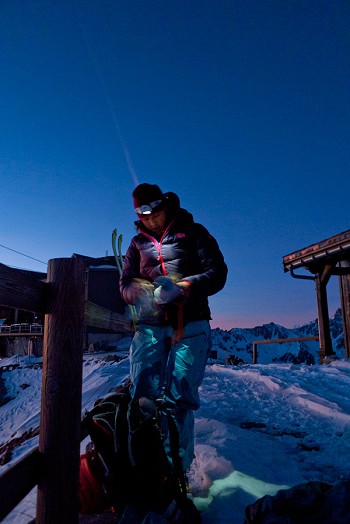
Many headtorches these days come with a mini-usb cable, or a dedicated charger. When the (usually Lithium-ion) battery runs down, all you do is charge it up at a socket. This is fantastic for those who use their torches for nightly runs or cycle rides, but not so handy for climbers wanting to take the torch on expedition, or even on a multi-day alpine climb. In these circumstances, being able to carry traditional spare batteries and change them is essential. Of course there are some torches that can take rechargable batteries and have a charging cable with them, but can also accept normal batteries too. These could be a good option for covering both bases. However the dedicated lithium-ion rechargeable batteries do last longer, give more power than the other types, and work better in the cold. Typically they can go through a re-charge cycle over 500 times, but they have a higher price.
Reactive lighting:
The Petzl Tikka RXP reviewed in this article has what is called 'reactive lighting technology'. The beam of light adjusts depending on where you are looking. If you look at your map close to you the beam gets less strong, and spreads more, when you look further away then the beam gets more powerful and projects further. More on this in the Petzl RXP review.
IP Rating:
Some headtorches are given an IP (ingress protection) rating which is a measure of how waterproof and dustproof the torches are. The rating system goes from 0 to 9 - 0 is not waterproof at all, and 9 is totally sealed. Level 4 is splashproof (full details: Wikipedia). In this review we weren't able to get IP figures for all the headtorches so we have only mentioned it with some of them.
Things we have considered:
It's tricky to review a whole set of headtorches, especially with such a range of prices, but we have looked at each model, and how effective it is in a wide range of uses. Key to this is how easy the torch is to use in the dark, with gloves on and in bad weather, as well as if it is actually bright enough to light the way when you are on a dark hillside.
Interestingly, we found that the fit and adjustability were really key features, because if you can't point the beam at the right angle, then even the most powerful light isn't enough.
Alpkit Manta (RRP £15)
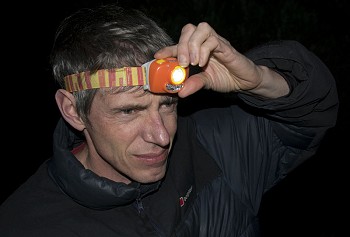
The Alpkit Manta is a great value headtorch with integrated battery unit taking 3 AAA batteries. It has a single main beam with a focus ring. Underneath the main beam are 4 low-power LEDs: green for map reading without affecting night vision; double red gives enough light to see features when walking but doesn't affect your night vision; and blue which is apparently for hunters.
The main beam claims 120 lumens although this might be slightly optimistic since it didn't appear to be significantly brighter than some of the other lamps with a lumen rating less than 100 (as noted below, the other lamps may have been conservative with their ratings; we aren't sure). It has a nice easy-to-use focussing ring which narrows the beam when required although it still has limited range compared to some of the higher powered lamps. There are two buttons on the top which are slightly awkward to use with gloves but reasonably logical to scroll through. One excellent feature of the lamp is the ability to dim the main beam to a claimed 10% of its power consumption. This extends burn time to an excellent 150 hours although it is very weak light.

The unit construction seems solid for the short time we have had it. One slight drawback is that the centre of gravity of the lamp unit is quite far forward meaning that it is possible for your momentum when running/jumping downwards to change the angle on the ratchet accidentally. Hopefully this won't get worse with time.
Overall this is an amazingly good value headtorch that provides a level of performance close to several more expensive rivals. It isn't the brightest lamp but has some good features for prolonged use and is nice and compact.
Alpkit Gamma (RRP £15)
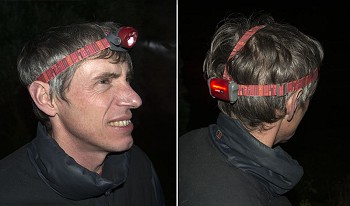
The Alpkit Gamma has a front light unit with the battery pack on the back. It is powered by 3 AAA batteries and deliver 88 lumens from the main beam although this appeared to be roughly as bright as the Alpkit Manta. You can extend this to a modest 20 hours using low power mode but 9 hours at high power will be adequate for most routes/walks/runs.
The rear battery compartment features a red LED on it helping to illuminate yourself from behind; perfect for running on dark country lanes, or those on a bike. It has a flashing option as well.
The Gamma also has three standard coloured LEDs: green for night navigation; red for maintaining night vision; and a low power white one for increased battery life.
The front unit is very compact and overall the full headtorch is well balanced. The size of the front unit means that everything has to be done through a single button which makes it quite awkward, especially switching between modes. A long press will toggle between the main beam and the coloured LEDs and then a single press scrolls through the coloured LED options. A slight drawback here is that the first of the coloured LEDs to be displayed is the white one which can destroy your night vision before you get to the red one. It would have made more sense to have the dimmest red or green as the first lamp selected.

Another great value offering from Alpkit which is a good option for runners and cyclists. It is brighter than expected but doesn't have a great burn time and has a few minor negatives on the design.
Black Diamond Storm (RRP: £55)

The torch has red LEDs in case you want to read a map without losing your night vision, and it is also possible to lock the torch so that it doesn't turn on in your bag. It takes AAA batteries.
The brightness was good, and the rating of 100 lumens seemed on the conservative side for real life use; this torch gave good strong light, easily enough for night abseiling and other climbing related activities. When looking in the far distance, the torch was clearly out performed by some of the heavier weight models in this test, however, we would rate its distance lighting as 'medium'. For close up lighting and general use the light is easily adequate. So far, so good.
It is a basic looking model, with batteries in the actual front lighting unit, and is simple to use, user friendly, and fits well on the head. The adjustment is good, which means that we found the elastic strap to be easy to use and it fit well to all head shapes and sizes, and also the angle of the torch itself was easy to adjust and had a good range. We found this to be a good all rounder, for general cragging, alpine climbing, home use etc. Recomended if you are out in very wet weather.
Black Diamond Icon / Icon Polar (RRP £75)

This is a super bright torch, and is also refreshingly easy to use. The front light unit is small, very light weight and easy to adjust, with a good range of angles. The button works well even with gloves on, and is easy to use. The lack of millions of modes to cycle through means that when on the hill at night, this torch scores highly in the lack of annoyance rating!
The lighting modes are simple, with a low mode for close by lighting and a much more powerful mode for looking further ahead. We found this to be one of the brighter torches in the test, again the lumen rating seemed conservative - this is a very bright torch.
For those looking for a specific high-end alpine winter / expedition or cold weather torch, this could be the pick of the bunch if you don't mind the price, and are not looking for the lightest weight. It takes AA batteries, which are easy to get hold of in foreign lands, you can put the battery pack in your jacket, helping in arctic temperatures, and the torch has a high quality, bombproof feel about it. Of course the long cable (or even just the cable round to the back of the head, as with any torch with seperate light and battery sections) is a potential damage point, so bear that in mind.
A tough, very bright, reliable torch.
Edelrid Quattro Stagione (RRP £30)
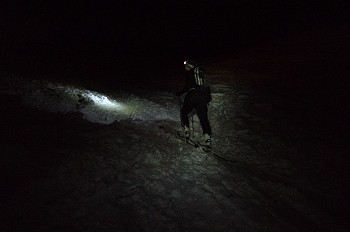
The button action was good, easy to use with gloves on, and simple. The torch takes AA batteries.
Whilst not the heaviest torch, rated at 130g, this one is quite large for the actual light it gives. However for usability at a good price, the Edelrid Quattro Staggione does what it says on the tin.
Mammut X-Sun (RRP: £250)

It comes with a dedicated charger, as the torch has its own Lithium-Ion battery. We found burn time to be very dependent on how much you use the 'super bright' setting, and it has a feature that automatically turns the super bright setting off after a few minutes, to save on battery power.
For those looking to do night time mountain biking or other activities, this could be the weapon of choice. For climbing we found the large front unit to be slightly cumbersome, and also the range of angles to be slightly limited, with the movement action difficult to change while wearing gloves, keeping the torch on your head and lighting the way. It could do with being able to point a little bit more towards the ground.
However this beast has become our 'go-to' lamp for nightly runs after work anyway, as it is simple to plug in and charge up each day, and it is so bright it makes rocky terrain very easy to navigate at a slightly higher pace. When running with this compared to some of the smaller lamps on test, the difference in lighting is literally 'night and day'!
The torch also comes with an extension cable allowing you to put the battery pack away in your jacket (as with the Icon Polar) if you want to keep it warmer.
The elastic strap fits the head well, however the over the top of the head strap did have an ocasional tendency to pop off the torch units, as the slot in to which you keyhole the elastic band is a little wide.
This isn't a torch for expeditions or multiday use in the mountains, as it doesn't take batteries, and is quite on the heavy side for carrying up routes. But if (a big if) you can afford the price tag of £250 and you want the brightest light you can get, then the X-Sun delivers. It is amazingly bright.
Mammut X-Shot (RRP £85)
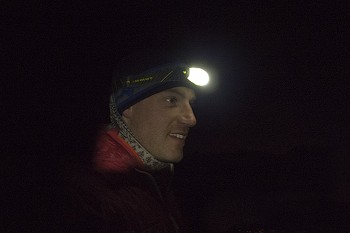
The low light options are easily enough to allow the user to read maps, follow simple trails etc, and give an incredible burn time of 200 hours. However when light is needed further away we rated the 'spotlight' setting on this torch very highly. Not only does the torch go very bright but the beam is very concentrated and for the weight and size this gave one of the most far reaching light beams in the test.

All in all a very nice torch and worth considering for those users who do alpine climbing or want the ease of use of just adding batteries.
Petzl Tikka XP2 (RRP £45)
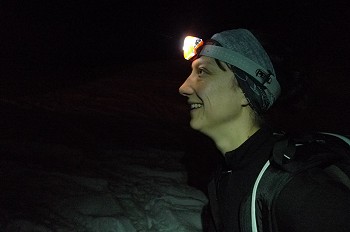
Petzl have been making headtorches for a long time and this really shows through with how easy to use and solid the XP2 seems.
A real top notch headtorch that in reality will cover most of your mountain needs, this is a good choice if you want a well priced torch for a 'bit of everything', or if you are buying a second torch to back up a more beefy model for extreme use.

The lightest torch in the test. Good, reliable and bright. Excellent mountain all rounder.
Petzl Tikka RXP (RRP: £90)
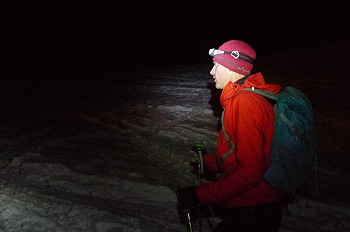
Straight away we switched it on to reactive light (there is an option to have normal lighting too) and I wondered if it was going to annoy me, changing beam all the time. It didn't. The reactive lighting technology works really, really well, and was a great feature of the RXP. Whilst not essential, it is very handy.
The rechargable battery that the torch comes with is guaranteed for 3 years or 300 charging cycles, and we didn't have any problems with it and found that it takes around 4 hours to charge up from fully flat.
This torch isn't for multiday alpine use, but is more suited to trail running and other sports where you quickly need to adjust the length of beam whilst moving. We found it particulalry good for night time skiing, for those wanting to get a bit of exerise after work!
The max and min burn time can vary dramatically between the modes and aren't really directly comparable to the other headtorches. In constant mode the max burn time in 10 hours, but in reactive mode this is the minimum burn time with the maximum dictated by your activity.
The battery is in the front light unit, and the unit doesn't feel too big or heavy, and is easy to adjust the beam direction. The strap fits very well, and is perhaps the most comfortable strap in this review. There are two buttons to cycle through the options and to lock the torch, and these were a little tricky to use with gloves on, but not impossible of course.
All in all, not a 100% climbing torch, but certainly something to consider for trail running, cycling and other sports, and would do the job getting you off the hill after a day out very, very well.
The headtorches On Test:
|
Model |
Price | Weight | Battery | Lumens | Burn Time min/max | Value | Performance |
|---|---|---|---|---|---|---|---|
| Alpkit Manta | £15 | 108g | 3 x AAA | 120 | 7hrs / 150hrs | ||
| Alpkit Gamma | £15 | 118g | 3 x AAA | 88 | 9hrs / 20hrs | ||
| Black Diamond Storm | £55 | 110g | 4 x AAA | 100 | 50 hrs / 125hrs | ||
| Black Diamond Icon | £75 | 300g | 4 x AA | 200 | 80hrs / 175hrs | ||
| Edelrid Quattro Staggione | £29.99 | 130g | 3 x AA | not available | not available | ||
| Mammut X-Sun | £250 | 270g | Lithium-Ion | 950 | 5hrs / 40hrs | ||
| Mammut X-Shot | £85 | 150g | 3 x AA | 200 | 15hrs / 200hrs | ||
| Petzl Tikka XP2 | £45 | 88g | 3 x AAA | 80 | 50hrs / 190hrs | ||
| Petzl Tikka RXP | £90 | 115g | Lithium-Ion | 215 | See above |



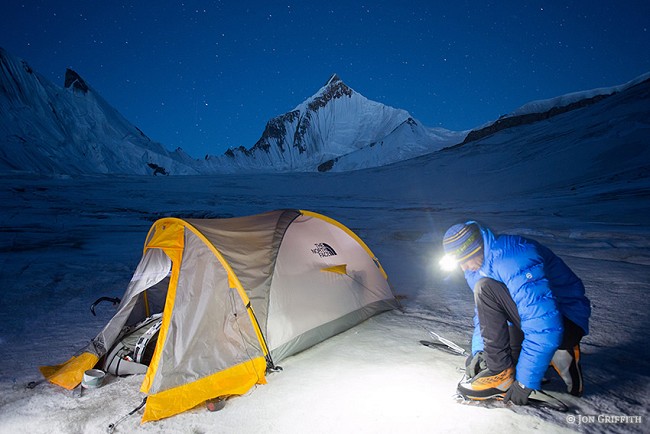
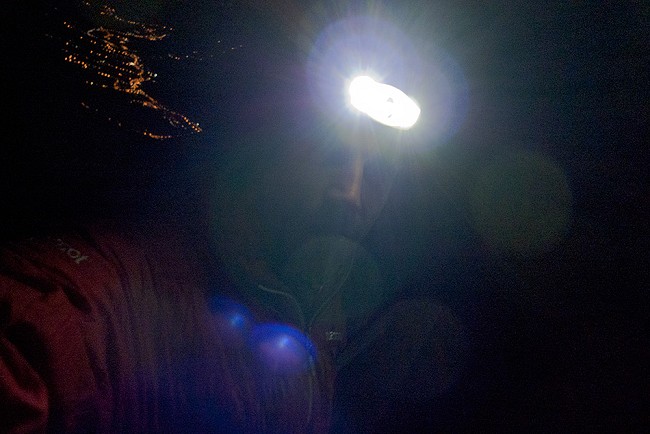
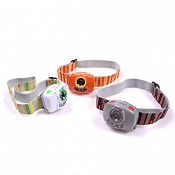


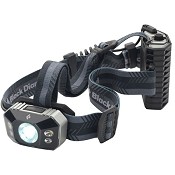

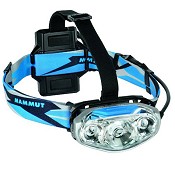
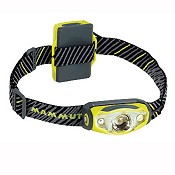
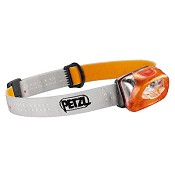
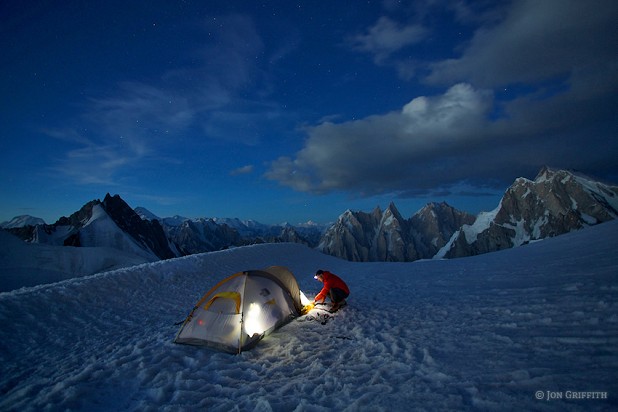
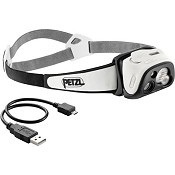
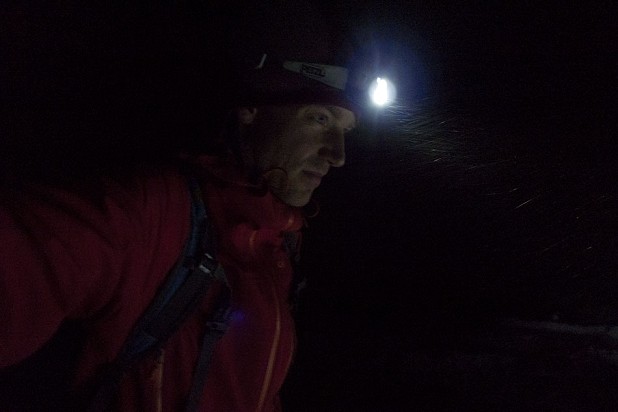


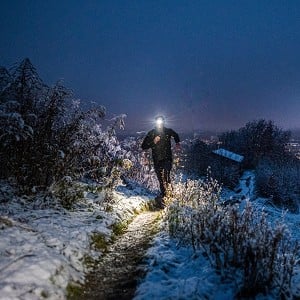

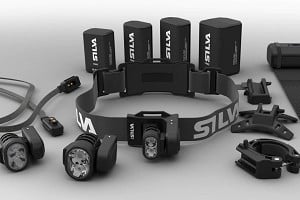
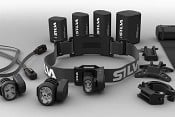
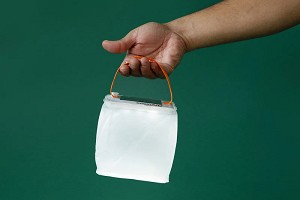

Comments